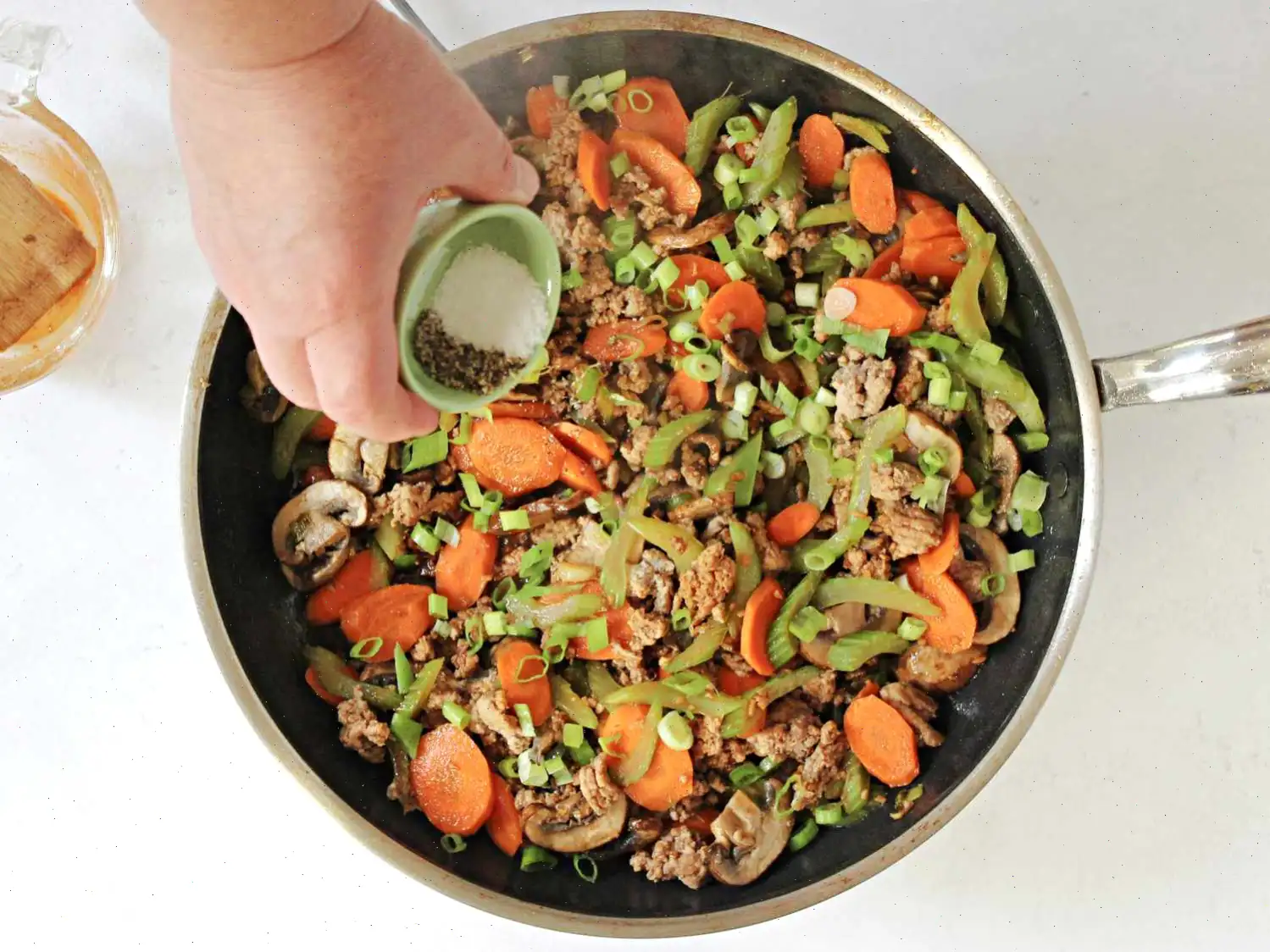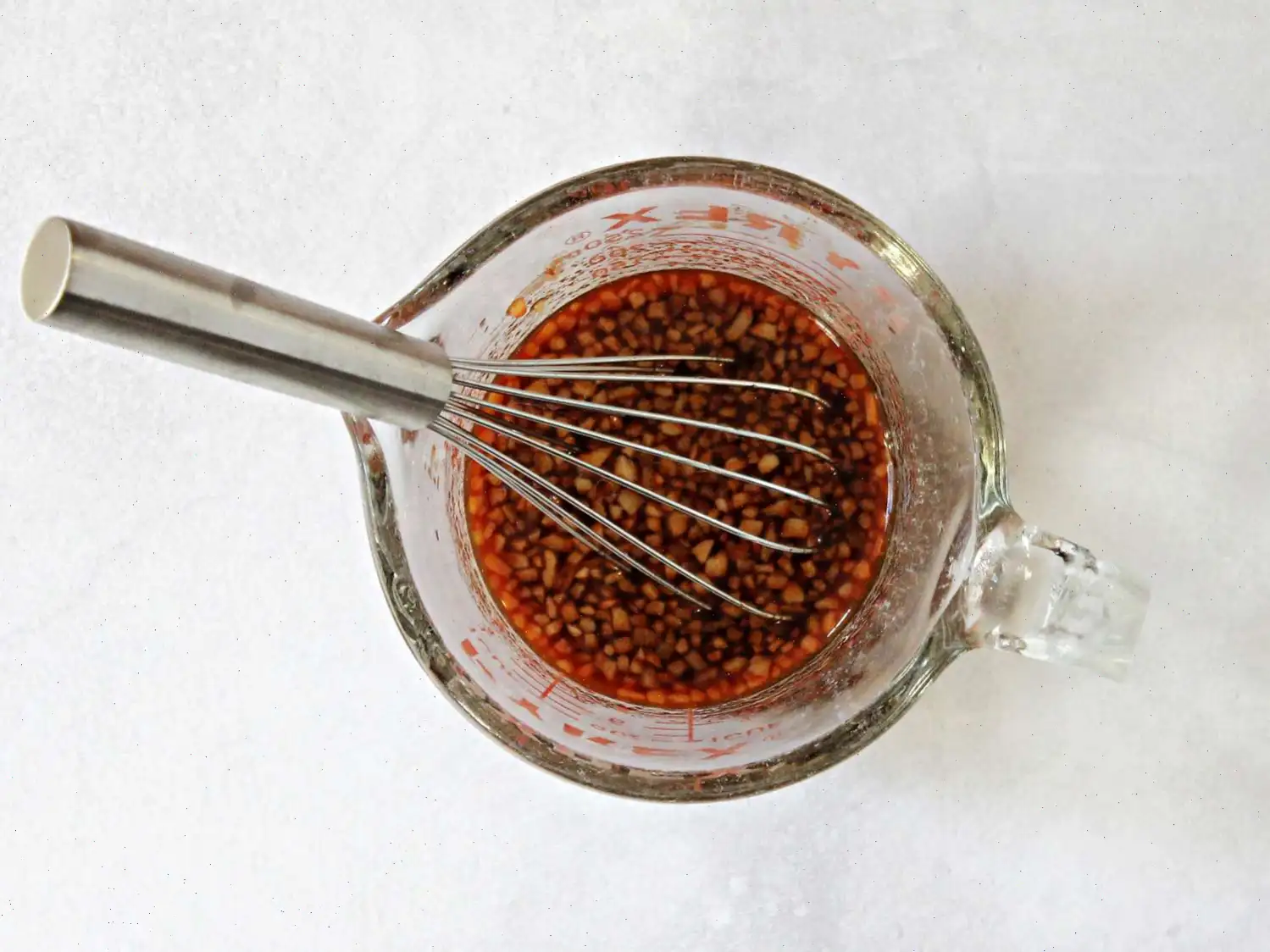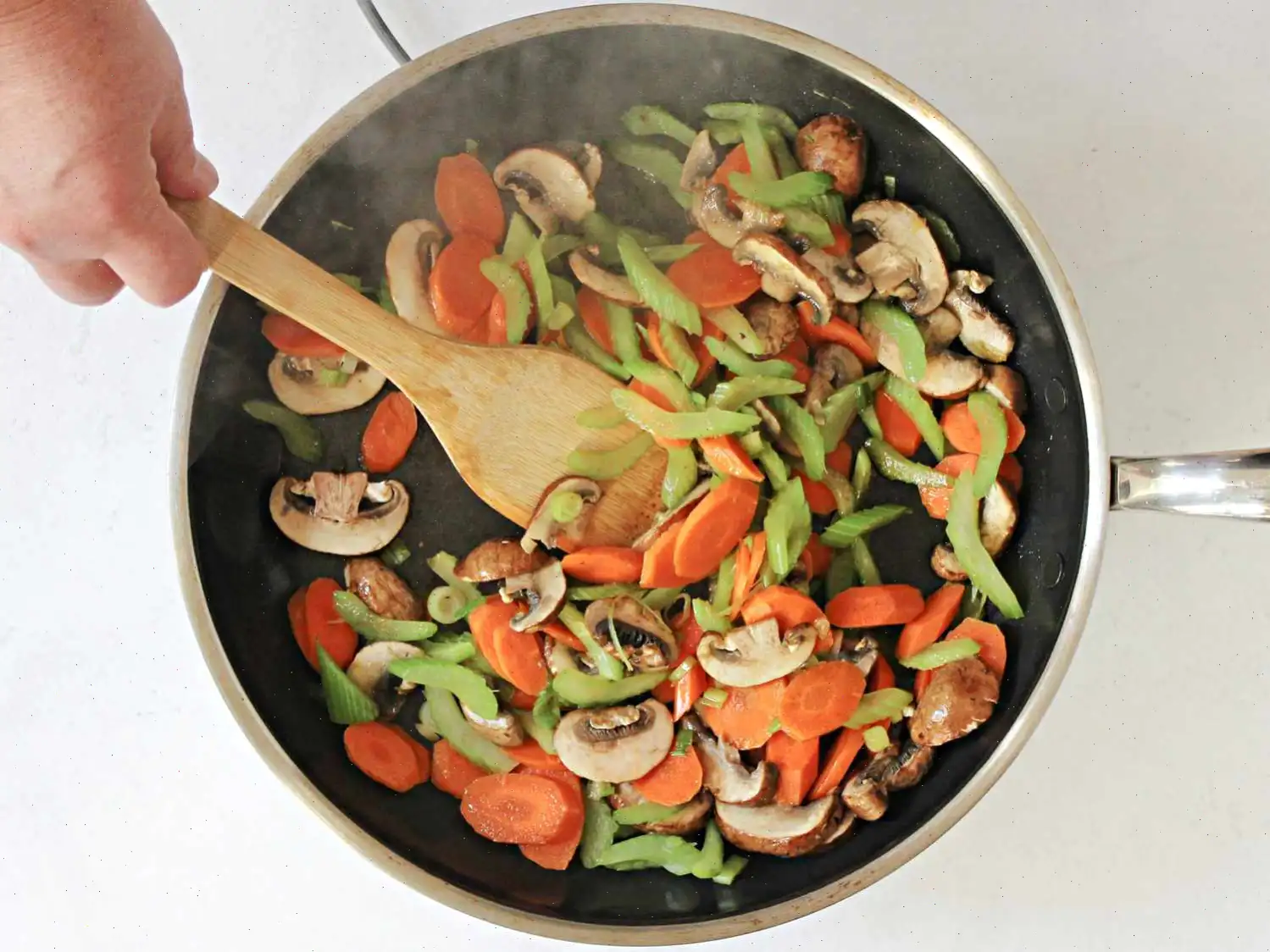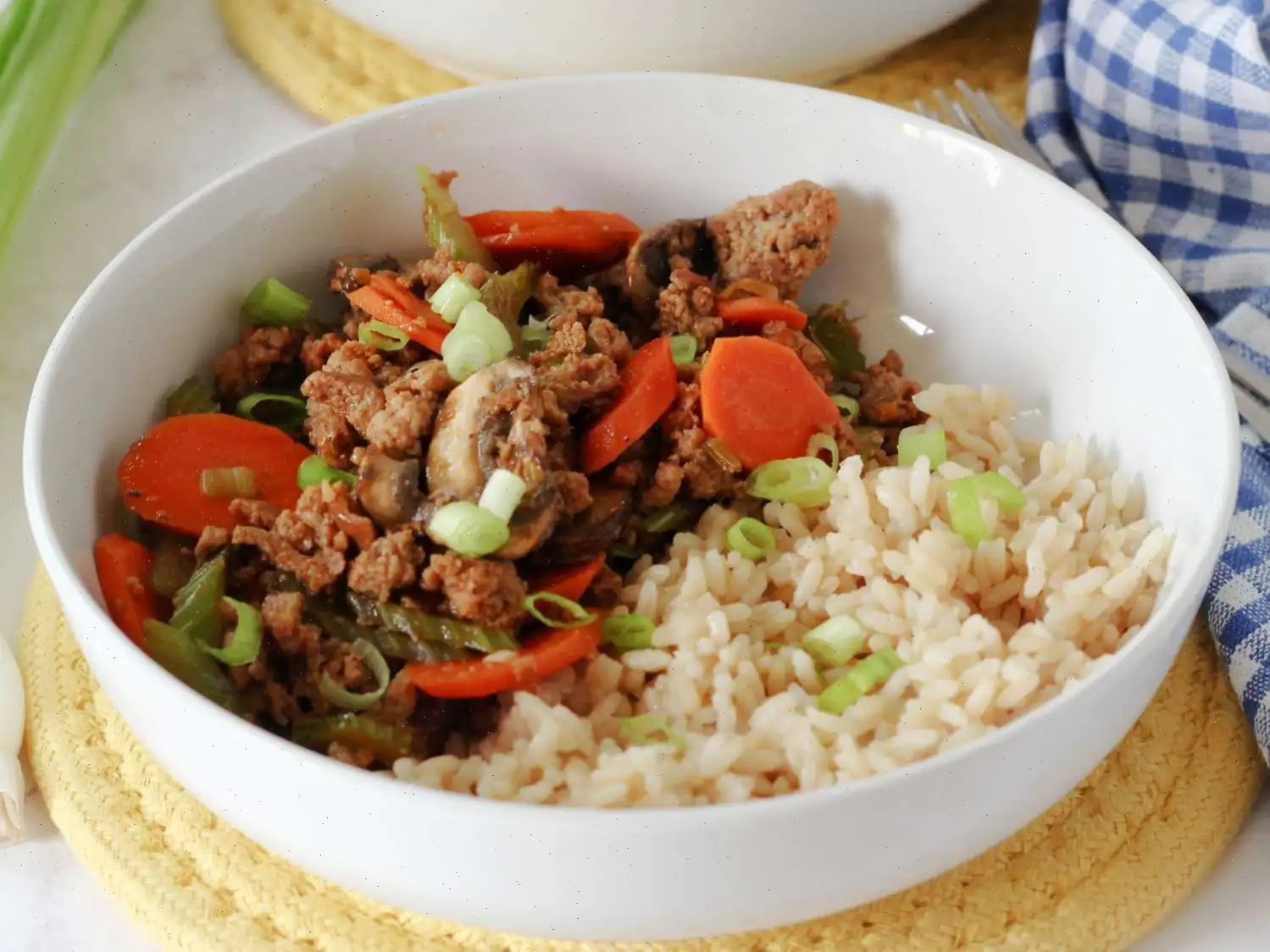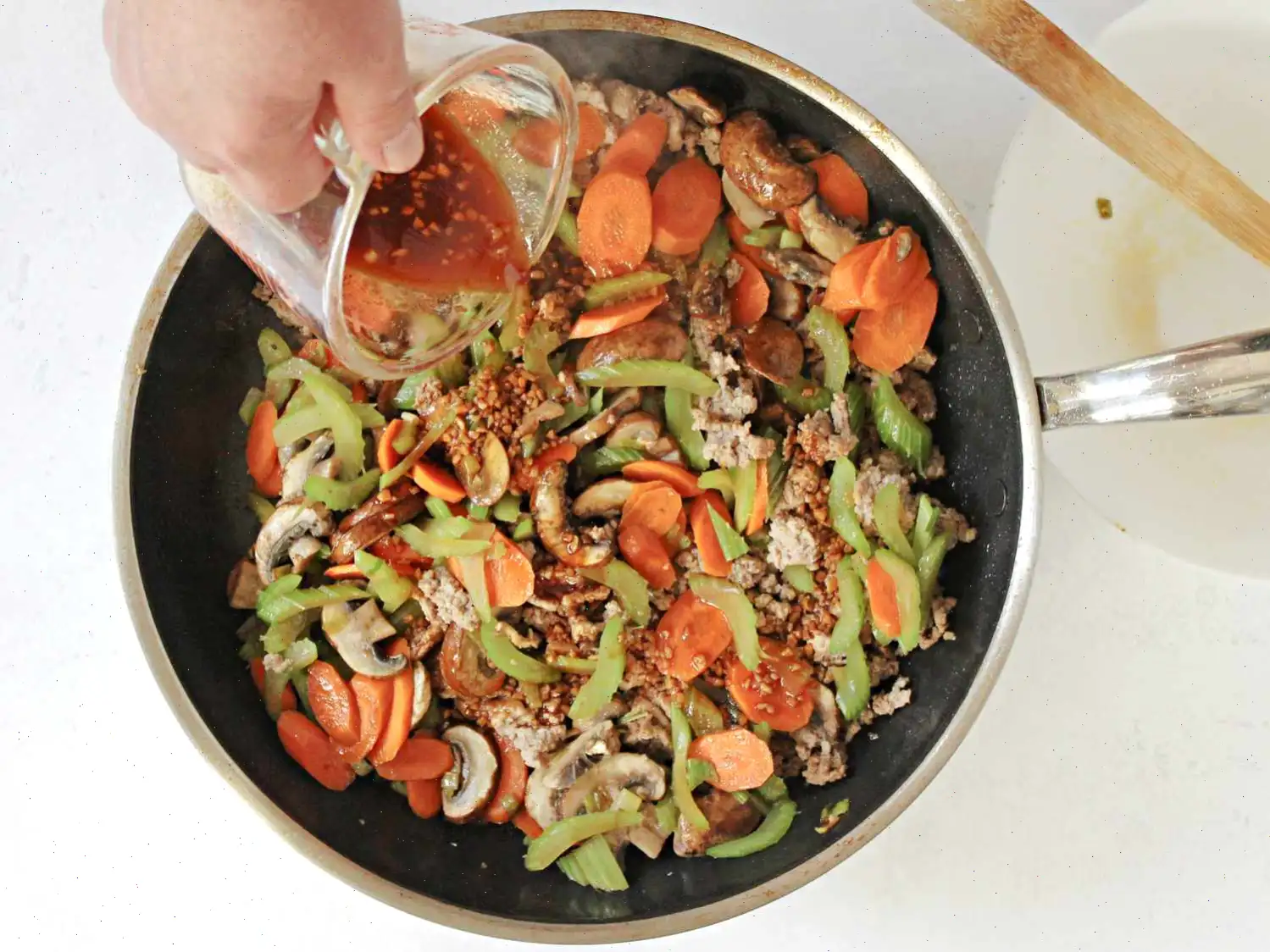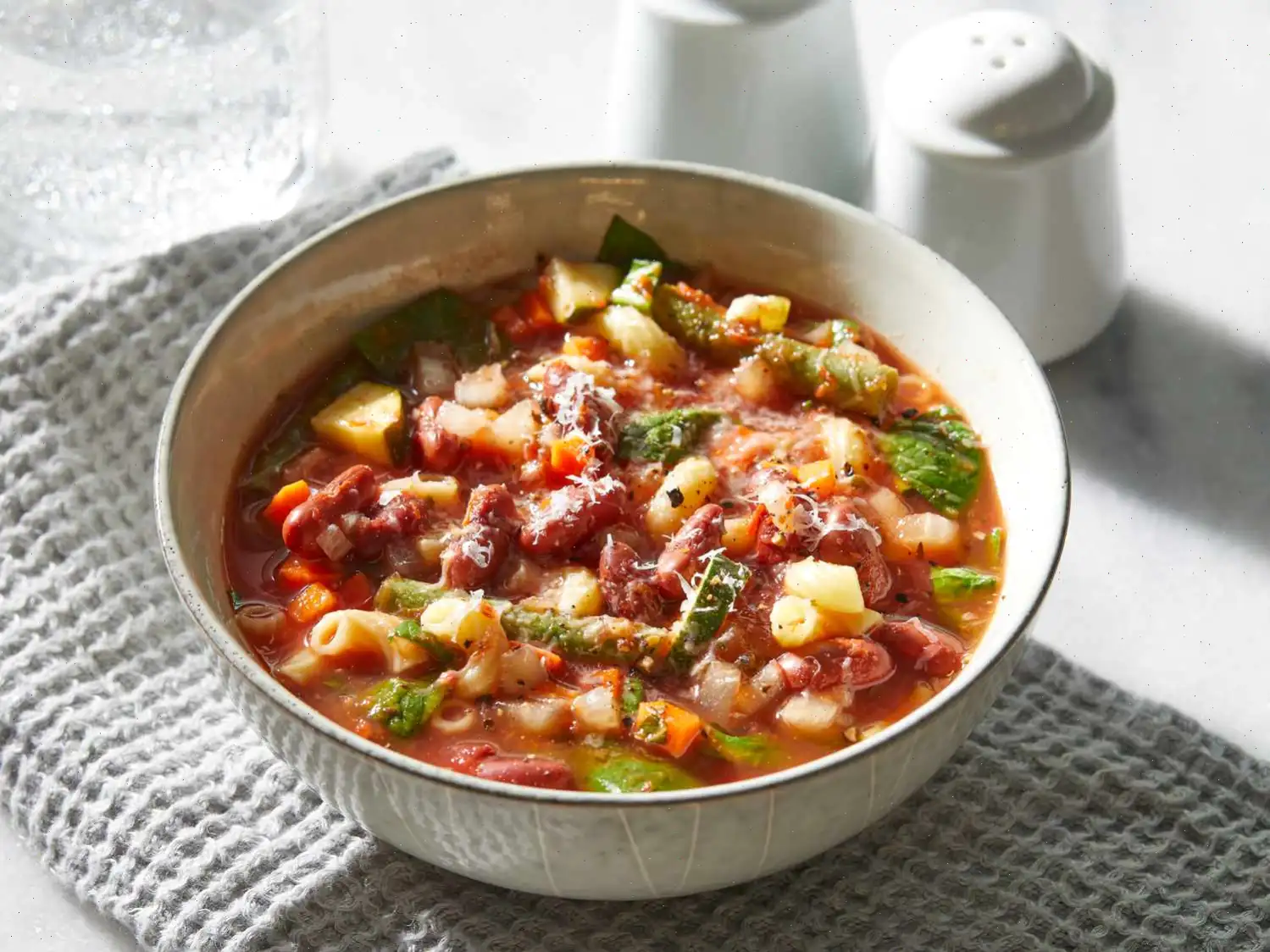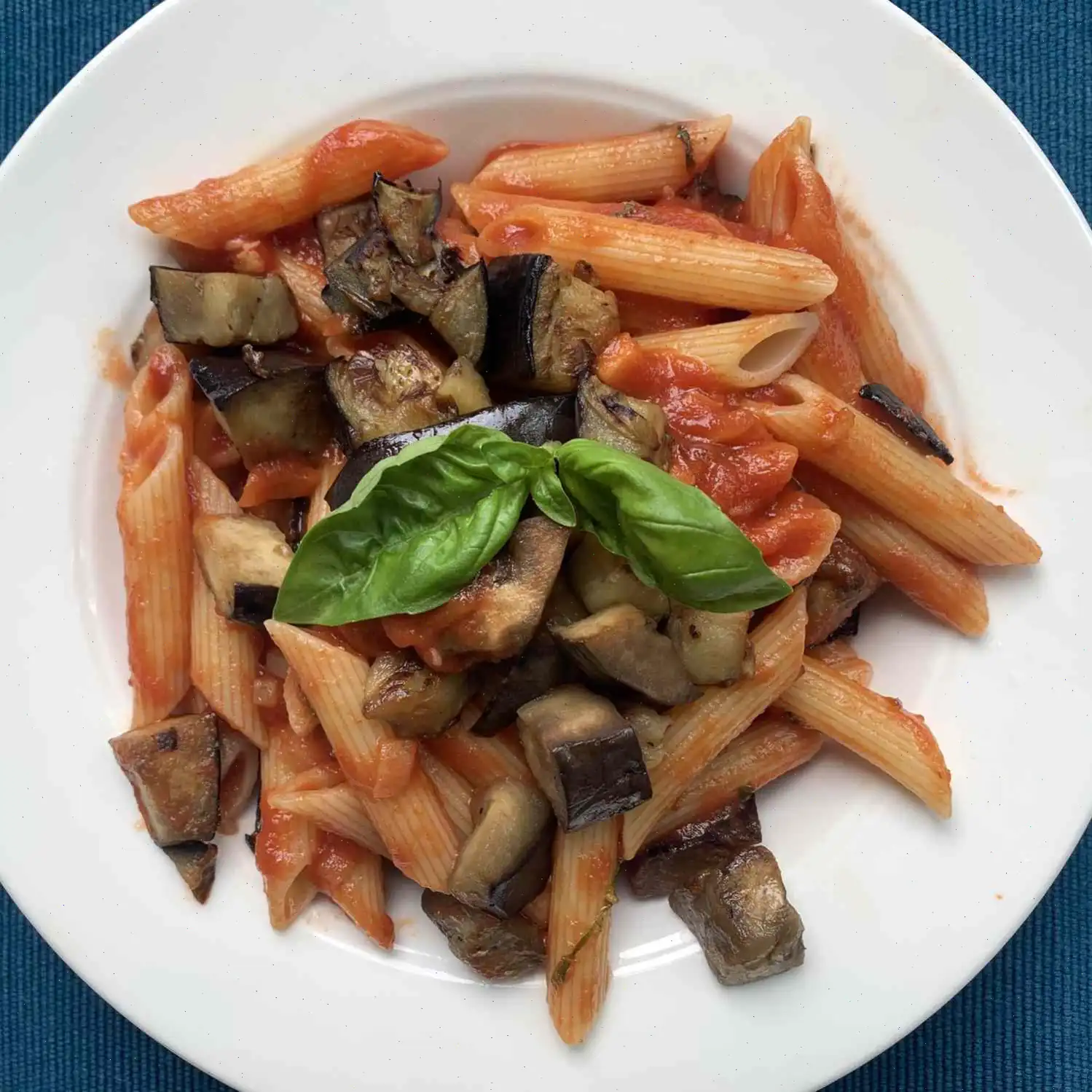
Ground Turkey Stir Fry Recipe
Ingredients
This recipe yields 4 servings. Adjustments to ingredient amounts may be made automatically, but cooking times and techniques should remain the same. Not all recipes scale perfectly.
Sauce:
- 1/4 cup low-sodium soy sauce
- 1 tablespoon honey
- 1 tablespoon gochujang (Korean hot pepper paste)
- 1 teaspoon sesame oil
- 2 cloves garlic, minced
Stir-Fry:
- 3 tablespoons vegetable oil, divided
- 8 cremini mushrooms, sliced
- 3 green onions, white and green parts separated, thinly sliced
- 3 carrots, peeled and diagonally sliced
- 3 stalks celery, diagonally sliced
- 1 pound lean ground turkey
- Salt and freshly ground black pepper, to taste
Directions
- Gather all ingredients and prepare your vegetables and aromatics.
- In a small bowl, whisk together the soy sauce, honey, gochujang, sesame oil, and minced garlic. Set aside.
- Heat 1 tablespoon of vegetable oil in a wok or large skillet over medium-high heat. Add the mushrooms, white parts of the green onions, carrots, and celery. Stir-fry constantly until vegetables are crisp-tender, about 4-6 minutes. Transfer the cooked vegetables to a bowl.
- In the same wok, heat the remaining 2 tablespoons of vegetable oil. Add the ground turkey and stir frequently, breaking up large chunks, until the meat is evenly browned, about 5-6 minutes.
- Return the vegetables to the wok. Pour the prepared sauce over the turkey and vegetables. Stir to combine and allow to simmer for 2-3 minutes, letting the flavors meld.
- Garnish with the green parts of the green onions. Season to taste with salt and freshly ground black pepper.
Cook's Tip: If you prefer, Sriracha or sambal oelek can replace the gochujang for a different heat profile.
Nutrition Facts (per serving)
- Calories: 417
- Total Fat: 25g (32% DV)
- Saturated Fat: 5g (26% DV)
- Cholesterol: 118mg (39% DV)
- Sodium: 1028mg (45% DV)
- Total Carbohydrates: 16g (6% DV)
- Dietary Fiber: 3g (9% DV)
- Total Sugars: 10g
- Protein: 34g (68% DV)
- Vitamin C: 6mg (7% DV)
- Calcium: 86mg (7% DV)
- Iron: 3mg (15% DV)
- Potassium: 812mg (17% DV)
*Percent Daily Values are based on a 2,000 calorie diet. Nutrient information may vary depending on ingredient brands and preparation methods. Consult a healthcare professional if following a medically restrictive diet.
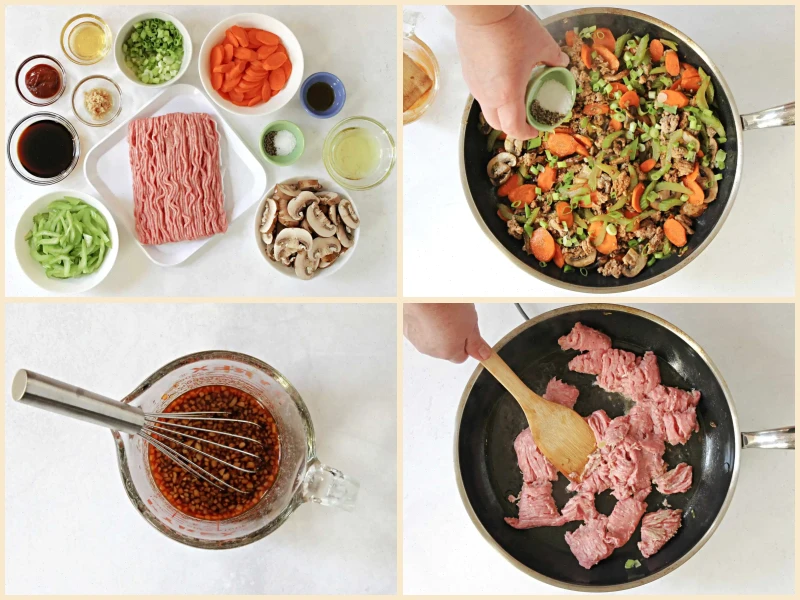
The Cultural and Culinary Story Behind Ground Turkey Stir Fry
The ground turkey stir fry is a modern adaptation of traditional Asian stir-frying techniques, which date back centuries to China. Stir-frying itself became popular during the Ming Dynasty, as cooks discovered that quickly cooking food in a hot wok preserved both flavor and nutrients. Using ground turkey instead of the more common beef, pork, or chicken is a relatively recent innovation, influenced by the global focus on lean protein and healthier eating habits.
Regional Variations and Local Twists
While the core of the dishground protein with vegetables and a savory-sweet sauceis universal, regional variations add unique flavors. In Korea, for example, the addition of gochujang provides a spicy, fermented depth that distinguishes it from Chinese or Japanese stir-fries. In American kitchens, cooks often use local vegetables such as celery, carrots, and mushrooms, balancing traditional Asian seasonings with ingredients readily available in supermarkets.
How It Differs From Similar Dishes
Ground turkey stir fry stands apart from classic stir-fries due to its use of minced poultry, which creates a finer texture and faster cooking time compared to sliced or cubed meat. Unlike dishes such as beef and broccoli or chicken teriyaki, this stir fry combines multiple vegetables with a bold, spicy-sweet sauce, emphasizing both speed and nutrition. The ground turkey also absorbs flavors more evenly, creating a cohesive taste throughout the dish.
Where Youll Typically Find It
This dish is commonly prepared at home for weeknight dinners and meal prep due to its simplicity and high-protein content. However, it is also featured in casual Asian-fusion restaurants that cater to health-conscious diners. In these establishments, it is often served over steamed rice or noodles, sometimes garnished with sesame seeds or sliced green onions for extra aroma and texture.
Fun and Interesting Facts
- Ground turkey was first commercially produced in the United States in the mid-20th century, making it a relatively new staple compared to traditional proteins.
- The inclusion of gochujang, a Korean chili paste, highlights the growing trend of incorporating international flavors into everyday home cooking.
- This stir fry is naturally high in protein while remaining low in carbohydrates, making it a favorite among fitness enthusiasts and those following a balanced diet.
- Unlike some heavier stir-fries, it can be cooked in under 30 minutes, making it ideal for quick lunches or dinner prep.
Overall, the ground turkey stir fry is a vibrant, nutritious dish that merges traditional Asian culinary methods with modern dietary preferences. Its adaptability and fast cooking time make it a staple for anyone seeking a flavorful, health-conscious meal.



